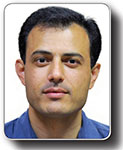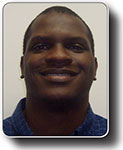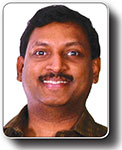Optimum well trajectory design in a planned well in Blacktip field, Australia: a case study
Vamegh Rasouli A , Zachariah Pallikathekathil B and Elike Mawuli CA Curtin University of Technology
B Schlumberger Oilfield Australia Pty Ltd
C Eni Australia
The APPEA Journal 50(1) 535-548 https://doi.org/10.1071/AJ09031
Published: 2010
Abstract
A geomechanics study carried out in the Blacktip field, offshore Australia led to optimum wellbore deviation and azimuth to minimise drilling-associated instability problems near a major fault in the field.
Elastic and strength properties of the formations and magnitude of principal stresses in the field were estimated from a mechanical earth model (MEM) based on offset well data. The direction of the minimum horizontal stresses was predicted from formation microresistivity image (FMI) logs available in offset wells. The MEM results were calibrated using results from laboratory experiments, well tests and drilling incidents from drilling reports. The MEM showed that formations at the lower section of the well are very competent and have high uniaxial strength; however, most of the failures in the form of breakouts observed from calliper and image logs were in this interval. Therefore, obtaining a good match between the model and observed failures required a large stress anisotropy to be considered for the lower section of the wellbore. Further investigations demonstrated that this is because the wellbore trajectory at deeper depth gets closer to the major fault plane, and this large stress anisotropy is due to the stress redistribution near the fault.
The data from offset well was mapped into the planned trajectory, and the selection of the optimum trajectory and a stable mud weight window for the appropriate section led to successful drilling of the deviated well.

Vamegh Rasouli is a Chartered Professional Engineer (CPEng) and is a registered engineer with the National Professional Engineers Register (NPER) of Australia. After completing his PhD in 2002 from Imperial College, London, Vamegh took up the position of assistant professor in the Department of Petroleum Engineering at Amirkabir University of Technology (Iran). In 2006 Vamegh joined the Department of Petroleum Engineering at Curtin University as a senior lecturer to add support to the delivery of the Department’s Master of Petroleum Well Engineering degree, and to carry out research in his specialist area of wellbore stability, sanding, hydraulic fracturing, etc. He established the Curtin Petroleum Geomechanics Group (CPGG), and he supervises five PhD students and number of Masters students. CPGG has completed a number of successful research and consulting projects. Vamegh is also a consulting engineer on various geomechanics related projects with Schlumberger’s Data and Consulting Services (DCS) in Perth. v.rasouli@curtin.edu.au |

Elike Mawuli is a drilling engineer in the well operations department at Eni Australia, based in Perth. He holds a Bachelor of Engineering and a Master of Engineering Management from Queensland University of Technology. His professional interest areas are in effective well planning and efficient well delivery. Member: (MIEAust) Engineers Australia, SPE and the Project Management Institute (PMI). Elike.Mawuli@eniaustralia.com.au |

Zachariah John Pallikathekathil (Zach) is the geomechanics coordinator with Schlumberger Australia Pty Ltd based in Perth. After completing his graduation in mechanical engineering with electives in computer science from Indian Institute of Technology, Delhi, Zach joined Schlumberger as a wireline logging engineer. His interest in log interpretation drew him to specialise in petrophysics and geosteering. After being in the management line in the data and management segment in Schlumberger, he moved to the technical line, being the domain champion for petrophysics covering wireline and LWD interpretation for the Australia geomarket. Due to his passion in geomechanics and with a background in engineering, he moved from petrophysics to geomechanics, taking up many internal training courses in geomechanics in Schlumberger and external courses from UWA. He has undertaken many geomechanics projects in the last few years especially in the field of 1D-MEM, borehole stability, sanding and reservoir geomechanics where information from LWD, sonic scanner, rock test results are brought together for a clearer understanding of the insitu stress state of the rock. He is a keen member of FESAus and the president elect for FESAus 2010. zach@perth.oilfield.slb.com |


